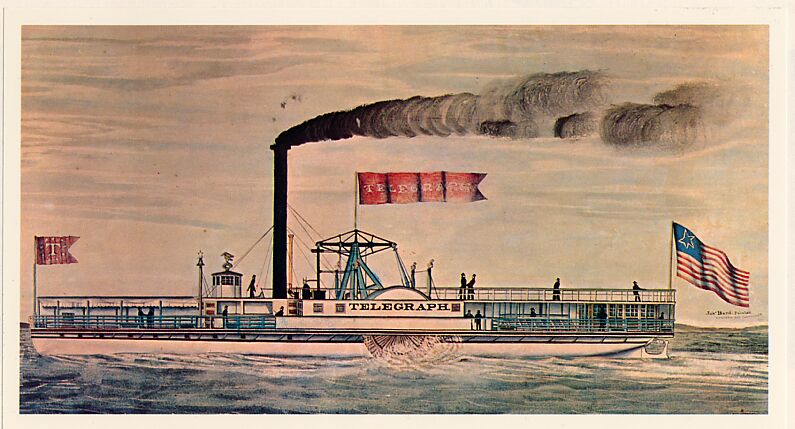| Doris Lane | ||||||||||||||
| New Jersey Stories | ||||||||||||||
|
Phoebe and The Man
The Sayres of Morristown NJ needed a gardener, some say, or a farmhand, and they turned to John P. Fusier of New York, who ran a boarding house and agency for servants who had emigrated from France. In late April 1833, Samuel Sayre hired Antoine LeBlanc through Fusier. Shortly after LeBlanc arrived and began working, the Sayres and Phoebe were dead. What became of the corpse of the killer may have been gorier than the crimes. Phoebe and The Man Who Became A Pocketbook Asbury Park and Stephen Crane Arbutus Cottage was a modest Victorian house; not up to the grand mansions or down to the simple cottages of the 19th century Christian resort town of Asbury Park, New Jersey. It was a family home lived in by a creative family whose most famous member would write The Red Badge of Courage, a classic in American literature. Asbury Park and Stephen Crane (Click) Nobody Believed the Pig Woman The 1922 Hall-Mills Double Murder in New Brunswick, New Jersey. Eleanor Mills was dressed in a red polka-dotted blue dress and black stockings. Her blue velvet hat was beside her body. Around her throat she wore a blood soaked, brown silk scarf. She lay stretched out at her lover's side, her left hand resting on his right knee. Rev. Hall's Panama hat covered his face, as if he were napping in broad daylight. His right arm was under Eleanor's shoulder, as if he could comfort her in death. She was 34 years old and he was 41. The Ghostly Peanut Stand At one time there was a house in Jersey City haunted by three ghosts: a man, the woman he loved, and a third ghost. A Mrs. Magee owned the house and had once shared it with her pretty daughter. A stubborn and domineering Irishwoman, Mrs. Magee lived long enough to regret events concerning a man, his maid, and a railroad terminal peanut stand. The Girls In The Garden Like lemmings, they come to the Jersey Shore in summer, the long-haired girls of the Mid-Atlantic. Many of them came to Asbury Park in the early '80s and some of them were dead when they left. Richard Biegenwald sometimes took his young wife along to the boardwalk trolling for victims and, sometimes, another woman, his wife's friend. He showed her one dead body he'd parked in his garage and gave her a ring belonging to another. Big Foot Lives Big Foot lives wherever there are woods, water, and swamps, and Big Foot likes it best when there is farmland bordering these areas. Big Foot raids crops, slaughters cattle and poultry, and, if hungry enough, family pets. Big Foot will tear the heavy wooden door off a barn to get at what it wants. Big Foot will stand big as life in your field shucking your corn and in your orchard picking your fruit. Big Foot will toss your enraged 50-pound watchdog straight out of the way and across the street. Big Foot will move so fast you can't shoot it with a high-powered automatic rifle, or ten. Big Foot will scream like a banshee, roar like ten bears, moan like a gale wind, and whistle very, very loud. It will smell like a dead thing. The Body In The Hudson On Sunday, July 25, 1841, Mary wore a white dress, with a blue scarf and a leghorn hat, and carried a parasol. She told her fiance, a boarder in her mother's house at 126 Nassau Street, that she was going to visit her aunt, Mrs. Downing, uptown on Jane Street. Daniel Payne promised to meet her that evening at the omnibus stop on Broadway and see her safely home. Daniel never met Mary at the omnibus stop. Her body was found three days later in the Hudson River near the shore of Hoboken, New Jersey. She had been tied with strips of her own clothing. True Crime: The Body In The Hudson The Devil And The Dancing Fool
The Devil And The Dancing Fool The No-Truck Truck Stop
Column: North Jersey Coast Line
Ocean Grove: Camp Meeting Tents By 1878, Ocean Grove, a Methodist Camp Meeting site, had a summer population of 18,000 people; there were 721 homes and 506 tents. There are 114 tents still existing of 250 around the turn of the 20th century. "Loch Arbor: New Jersey's One and Only Village Loch Arbor had been since 1848 one of the original eight United States Life Saving Boat House sites; huts, really, built after 18 sailors drowned trying to swim 300 yards to shore from a grounded brig. The eight life-saving stations were strung every two and a half miles along the Jersey Shore and were the beginnings of the U.S. Coast Guard. Ocean Grove: "Way To Build A Town" An aspect of the mission of the early town planners was to foster community and fellowship. The houses were deliberately built in close proximity, with single, double, or triple-tiered porches, so that neighbors would interact and converse outdoors. A backyard is a rarity, although gardens are common. In an almost startling contrast to the modern backyard, garage and driveway, which effectively isolate people from their neighbors, the streets of Ocean Grove, even today, offer daily interaction among its residents and guests. Social chatter, gossip, scandal, and hot political news travel from porch to porch. Ocean Grove: "Music To My Ears" Music comes on the air of this Methodist Camp Meeting town. My appreciation of Methodists goes back to when I was a small girl who balked at attending the Dutch Reformed Church of my forbearers. I had an indulgent, well, unconventional, mother, who did not stop me from climbing the hill on our street on Sunday mornings to go all by myself to the Summerfield Methodist Church. I had one reason for this early rebellion and one reason alone: The Music. Asbury Park's Hometown Newspaper "Ocean Grove Eats And Conveniences" Get up early, Kevin's opens at 5:30 AM, go get your newspaper. Go next door to Freedman's for a doughnut and coffee, or across the street to the Daily Grind for a French Roast and poppy seed scone. Walk down to the beach. Sit on a bench. Drink your coffee. Watch the sunrise break over the ocean. Spend the day reading under a beach umbrella, gather seashells, take a swim. In the late afternoon, go home to your hotel room and take a nap. Get up, get showered, get dressed. Walk to the fishing club pier and join the rest of the town at sunset. Look out over the swelling sea and up at the first glowing, then darkening, sky. You will have found "New Jersey Transit to Bay Head" The trains themselves are nothing fancy and the service is downright eccentric. Conductors, except for one single curmudgeon who takes great pleasure in pointing up a passenger's failure to obey every rule, are courteous and helpful, even as far as telling you, for next time, how to buy the cheapest ticket. Onboard personnel, young or old, are old school railroad. And that's how we like it here in the Garden State. We like a conductor to call out in fulsome tones, "The station is Ho-BO-ken!" or "Mat-e-WAN! The station is Mat-e-WAN!" "The Disappearing Railroad Blues" (Keyport) Keyport is an excellent example of a town that has gone through a long period of decline and is now picking itself up and brushing itself off. My architect friends, Dann and Stephen, say it often enough, "Poverty is the best preservationist." The building stock in neglected shore towns often retains its 18th and 19th century integrity, while more prosperous areas have been modernized out of any recognizable past. It is quite true and shows its truth right nicely in the Raritan Bay town of Keyport. "Go Away And Come Back" (Ocean Grove) I mentioned Asbury Park earlier, but I neglected to mention gay people and Asbury Park. The local paper in Asbury Park, the "triCity News," had a piece recently on gay people from Manhattan buying up the beautiful old houses in Asbury and transforming them into palaces of good decorating taste. This weekend the story around town was that a gay newspaper that is distributed in gay bars all over the world is doing a piece on gay life in Ocean Grove. I am here to tell you that Ocean Grove's gay people are not much fun at all. They might as well be Methodists, as far as I can tell. When they want to misbehave they go over to Asbury Park. Even when they have their annual gay potluck dinner, it is held in Asbury Park. "Asbury Park And Tony Soprano" Asbury Park on 'Sopranos' is portrayed truly. It is just that surreal and ghostly, all that abandoned and bereft. A town out of Rod Sterling's 'Twilight Zone' where everybody one day stood up and walked away. Just as Louis Malle's 'Atlantic City' caught its moment, so did David Chase's 26th episode of the second season of 'Sopranos' catch Asbury Park between its past and future. It is here, in this wind-swept ghost town of a seaside resort, just poised on a new beginning, where Tony Soprano meets his own past and future on April 9, 2000. "Drinking In A Dry Town" (Ocean Grove) Our town of Ocean Grove, New Jersey, was founded as a Methodist camp meeting site after the Civil War. There has always been and still is an ordinance here against drinking alcohol. I am told that out near the Broadway gate at Highway 71 once stood a speakeasy, where visitors in horse-drawn buggies and later automobiles would stop on the way into town to stock up on spirits for their spiritual weekend, before, during, and after Prohibition. Getting around the town's blue law has always been something of a local sport. A charming custom to develop from the official ban on alcohol was known as Tea Time. Residents of an early evening would set their tea services out on a front porch table and pour cocktails for their guests to drink from fine china cups. "Long Branch: The 19th Century Resort of Choice"
Picture if you will, the arrival of the steamboat -- Col. Jim Fiske's "floating palace" - the side wheeler "Plymouth Rock," having taken the Outside Run from the Hudson River (then called the North River) in Manhattan, through the Narrows, across the Lower Bay, past Sandy Hook, to dock at the famous Ocean Pier at Long Branch. Billowing canvas awnings shade the fashionable ladies and gents seated on the pier who await the arrival of weekend guests. As they wait for the ship to come in, they take the cool ocean breezes and breathe in the good salt air. Even today, when some houses are air-conditioned, the life of the town is outside, and homeowners delight in presenting their houses in the best light to the street. Facades are painted and detailed in Victorian style, wicker and wrought iron furniture graces the porches, and petite gardens are planted in every flower, bush, and shrub. Some of the front yards have gardens that are bigger than the cottages they front. Some of the gardens are as small as the space between the road and the sidewalk, where every free inch is planted. The town does plant in parks and other public greens, but it is the citizenry whose pride and labor produces the display of beauty Ocean Grove enjoys in three seasons of every year. |
||||||||||||||
 |
||||||||||||||
|
|
|
|||||||||||||
|
Featured Links for New Jersey |
||||||||||||||






